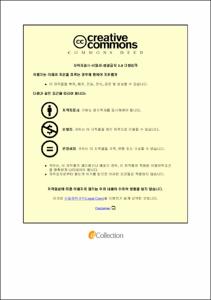후쿠시마 원전사고가 국내산 갈치와 고등어 수요에 미친 영향
- Abstract
- This study analyzes how the Fukushima Nuclear Accident in 2011 has impacted domestic fishery demand of Korea. Most existing studies have reached vague conclusions using methods such as the five-point Likert technique. The goal of this study is to come to a more concrete and numerical conclusion. This study analyzes time series data with VAR(Vector Auto-Regression) Model and a survey with CVM(Contingent Valuation Method). VAR Model is useful in that it can simultaneously consider changes in demand of fishes that are substitutional or complementary. CVM can estimate the consumers’ overall demand-reduction plan, when the price of WTP(willingness to pay) is replaced with percentage of how much they are willing to reduce demand. The subjects were limited to domestic Hairtails and Markerls as they are the most consumed and highly likely to be influenced by the Fukushima Nuclear Accident.
In the first part of the study relating to the analysis of time series data using VAR Model, the number of fish derived from the total yield subtracted by the number of frozen fish substitutes the lacking monthly data of demand. This study analyzes the monthly time series data from 2005 to 2012 of KOSIS. The results includes the forecasted demand of domestic Hairtails and Markerels after March of 2011, using coefficient of VAR analyse of data from January of 2005 to Feburary of 2011, assuming that there was no nuclear accident. Then, the predicted numbers were compared with the actual data in 2011 and 2012 in order to show the ratio of decline in demand. There was a monthly average of 37.5% decrease in the consumption of Hairtails, while that of Markerels showed a 5% decrease.
In the second part of the study, a survey was constructed based on the principle of CVM, asking the participants their willingness to reduce the consumption of Hairtails and Markerls. The range of value asked to the participants was 0 to 30 % with Markerels and 10 to 60% with Hairtails. The range of the percentage was decided based on the results of VAR model. Each questions proposed a certain percentage using random sampling in the form of dichotomous choice, where answers are either ‘yes’ or ‘no’. The Binary Logit Model was used to determine the mean contingent value, which is shown as percentage in this case. According to the survey, people are willing to cut 41% of their demands for Hairtails and 17% of those for Markerls on average. The willingness to reduce consumption of both fishes is higher than the results form VAR, but showed greater disparity with Markerels. This means the consumers’ actual consumption was lower than their planned consumption. The reason for the greater gap in the case of Markerels can be assumed that Markerels are likely to be consumed collectively regardless of consumers’ favor.
In conclusion, this study has shown that VAR model can be used to forecast the demand of specific domestic fishes in a more objective and precise manner. Moreover, the study has proposed a way to estimate the change in demand when an exogenous shock like a nuclear accident arises.
- Issued Date
- 2019
- Awarded Date
- 2019. 8
- Type
- Dissertation
- Publisher
- 부경대학교
- Affiliation
- 부경대학교 대학원
- Department
- 대학원 자원환경경제학과
- Advisor
- 신용민
- Table Of Contents
- Ⅰ. 서론 1
1. 연구목적과 필요성 1
2. 선행연구 분석 2
3. 연구방법 4
Ⅱ. 현황분석 7
1. 후쿠시마 원전사고와 수산물 수요 7
2. 주요 어종현황 9
3. 고등어와 갈치 판매현황 12
Ⅲ. VAR모형을 이용한 시계열분석 16
1. VAR모형과 수산물 수요예측 16
2. 시계열자료에 대한 분석 24
3. 원전사고의 영향분석 32
Ⅳ. CVM을 응용한 설문조사분석 36
1. 설문조사와 CVM응용 36
2. 우도함수와 로지스틱모형 41
3. 원전사고의 영향분석 45
Ⅴ. 결론 50
참고문헌 52
- Degree
- Master
- Files in This Item:
-
-
Download
 후쿠시마 원전사고가 국내산 갈치와 고등어 수요에 미친 영향.pdf
기타 데이터 / 823.68 kB / Adobe PDF
후쿠시마 원전사고가 국내산 갈치와 고등어 수요에 미친 영향.pdf
기타 데이터 / 823.68 kB / Adobe PDF
-
Items in Repository are protected by copyright, with all rights reserved, unless otherwise indicated.